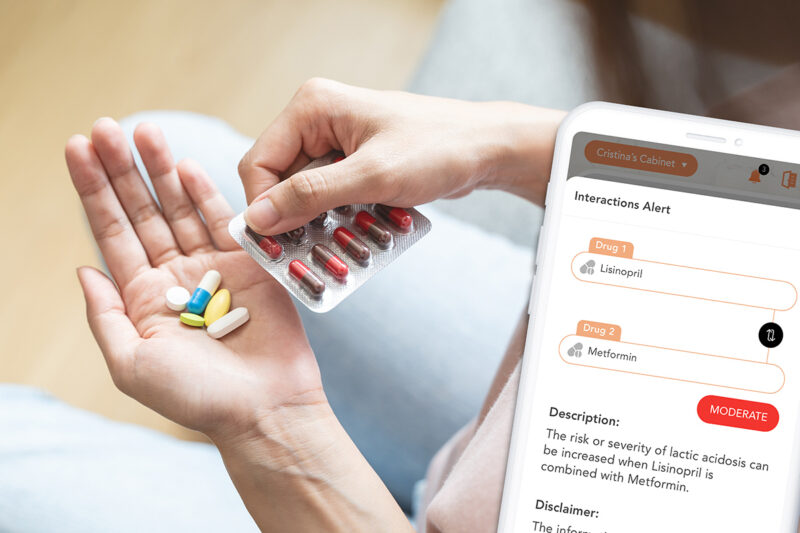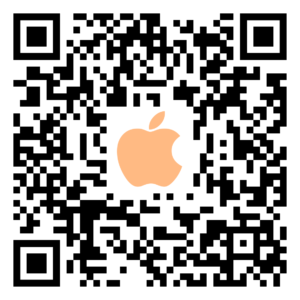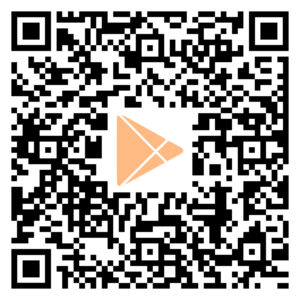 In the increasingly complex world of modern healthcare, where multiple medications and treatments often become the norm, the risk of drug interactions is a significant concern. Drug interactions occur when two or more drugs, including prescription medications, over-the-counter remedies, or even dietary supplements, interact in ways that can alter their effects, potentially leading to unforeseen consequences.
In the increasingly complex world of modern healthcare, where multiple medications and treatments often become the norm, the risk of drug interactions is a significant concern. Drug interactions occur when two or more drugs, including prescription medications, over-the-counter remedies, or even dietary supplements, interact in ways that can alter their effects, potentially leading to unforeseen consequences.
Understanding the nature of drug interactions, their potential impacts, and how technology like MyCabinet can help mitigate these risks is essential for safe and effective healthcare management. In this comprehensive guide, we will delve into the intricacies of drug interactions, examine their implications, share real-world examples, and explore how MyCabinet, a powerful medication management platform, serves as your guardian in ensuring medication safety.
Unpacking Drug Interactions
Before we explore the world of drug interactions, it’s crucial to understand what they entail. Drug interactions occur when the effects of one drug are influenced, either positively or negatively, by another substance. These interactions can be classified into three primary categories:
- Additive Effects: This occurs when the combined effect of two or more drugs is greater than the sum of their individual effects. While this can enhance therapeutic benefits, it may also amplify adverse side effects.
- Synergistic Effects: Synergistic interactions are similar to additive ones but often result in a more pronounced effect. In some cases, this can lead to heightened therapeutic benefits, but it may also increase the risk of side effects or toxicity.
- Antagonistic Effects: Antagonistic interactions involve drugs that counteract each other’s effects. This can lead to reduced efficacy or treatment failure.
The Consequences of Drug Interactions
Understanding the consequences of drug interactions is crucial in grasping their significance. Some potential outcomes of drug interactions include:
Reduced Medication Efficacy: Interactions may hinder the effectiveness of one or more drugs, leaving underlying medical conditions inadequately treated.
Increased Risk of Side Effects: Certain interactions can amplify the side effects of medications, potentially causing harm or discomfort.
Toxicity: In severe cases, interactions can lead to drug toxicity, manifesting as symptoms ranging from nausea to organ damage.
Treatment Failure: When medications interact negatively, they may fail to address the intended medical issue, prolonging illness or complications.
Hospitalization: Serious interactions may necessitate hospitalization, particularly in cases of drug toxicity or life-threatening side effects.
Examples of Drug Interactions
To illustrate the real-world implications of drug interactions, let’s explore a few specific scenarios:
- Warfarin and Antibiotics: Warfarin, a commonly prescribed blood thinner, can interact with antibiotics like ciprofloxacin. This interaction can increase the risk of bleeding, a potentially life-threatening situation.
- Grapefruit Juice and Statins: Grapefruit juice can inhibit the metabolism of statin medications, leading to elevated levels in the bloodstream. This increases the risk of side effects, such as muscle pain or liver problems.
- Antidepressants and Cold Medications: Certain antidepressants, particularly those of the selective serotonin reuptake inhibitor (SSRI) class, can interact with over-the-counter cold medications containing pseudoephedrine. This interaction can lead to serotonin syndrome, a potentially life-threatening condition characterized by confusion, rapid heart rate, and elevated blood pressure.
- Oral Contraceptives and Antibiotics: Some antibiotics, notably rifampin, can reduce the effectiveness of oral contraceptives. This interaction may increase the risk of unintended pregnancies, requiring alternative birth control methods.
- NSAIDs and Blood Pressure Medications: Nonsteroidal anti-inflammatory drugs (NSAIDs) can attenuate the effects of certain blood pressure medications, potentially leading to uncontrolled hypertension.
MyCabinet: Your Guardian Against Drug-to-Drug Interactions
Now that we’ve explored the complexities of drug interactions and their potential consequences, it’s time to introduce MyCabinet as a powerful ally in your healthcare journey. MyCabinet is a sophisticated medication management platform designed to help you navigate the complexities of your healthcare regimen. Here’s how MyCabinet can keep you safe from harmful drug interactions:
- Medication Interaction Alerts: MyCabinet employs an extensive database to identify potential drug-to-drug interactions based on your medication list. This real-time feature provides alerts and recommendations to help you and your healthcare provider make informed decisions.
- Personal Medication Records: With MyCabinet, you can maintain a comprehensive and up-to-date record of all your medications, both prescription and non-prescription, as well as supplements, including dosages and schedules. This information is vital for healthcare providers, enabling them to assess potential interactions accurately.
- Healthcare Provider Collaboration: MyCabinet allows you to share your medication records. This ensures that your healthcare team has the most accurate information to guide your treatment.
- Customized Health Reminders: MyCabinet provides customized reminders for medication doses, doctor appointments, and prescription refills, minimizing the risk of missed doses or appointments.
In a world where healthcare complexity is on the rise, the importance of managing drug interactions cannot be overstated. The consequences of overlooking potential interactions can be severe, impacting your well-being and treatment outcomes. MyCabinet emerges as your trusted ally, equipped with the knowledge and technology needed to safeguard your health. Download the app to learn more about how you can take control of drug interactions just by adding medicines into your cabinet.




